From time to time the media takes some interest:
Low emergency oil reserves ‘now pose a danger to security’
16/2/2018
Australia’s failure to meet emergency oil reserves now posed a national security threat, the head of the government-controlled -intelligence and security committee [Andrew Hastie] has warned following an international report that confirmed Australia was vulnerable to external oil “supply” shocks.
A report by the International Energy Agency revealed Australia last year had reached its lowest level of emergency supply in – almost 20 years and had been “well below” the mandated reserve of a minimum 90-day supply, required under its international obligations, for the past five years
And these are the latest numbers from the Australian Petroleum Statistics (APS):
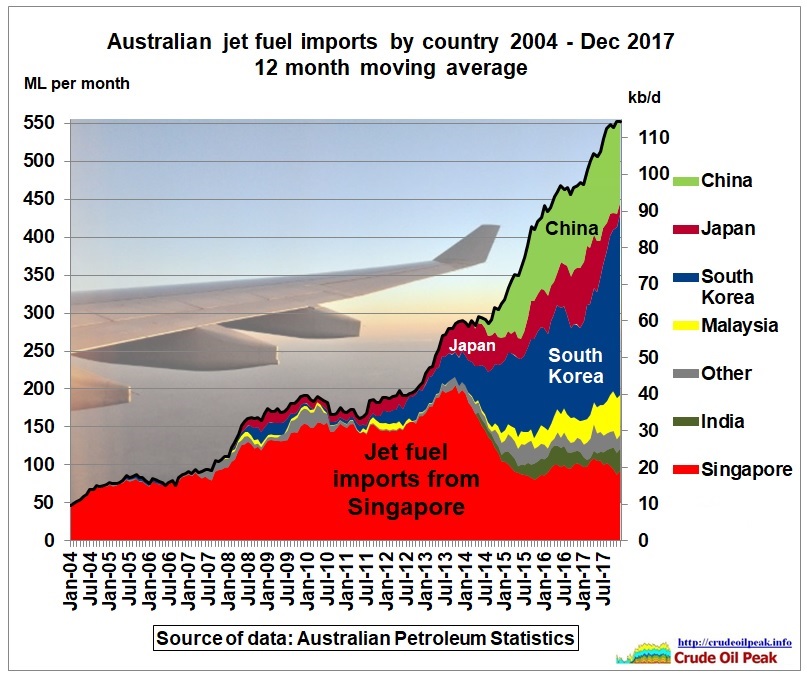 Fig 1: The sky is (not) the limit
Fig 1: The sky is (not) the limit
The public thinks Australia’s fuel imports mainly come from Singapore. No more after 3 refinery closures. It’s now from South Korea, Japan and China.
From APS, table 7:
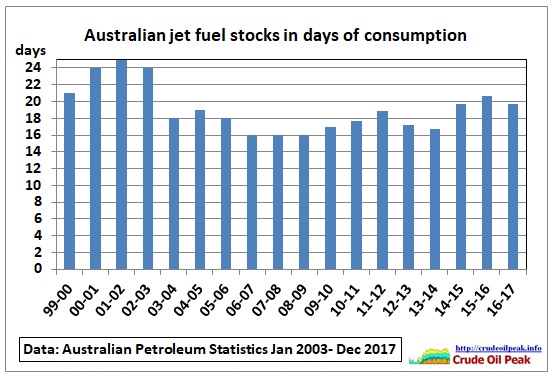 Fig 2: Come home soon before it’s too late
Fig 2: Come home soon before it’s too late
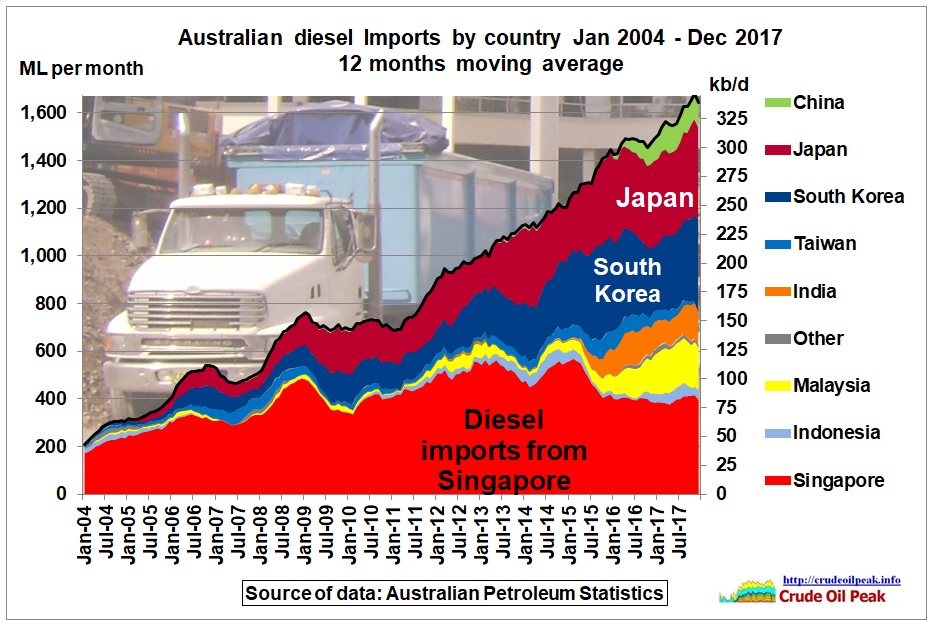 Fig 3: Demolition boom after the mining boom
Fig 3: Demolition boom after the mining boom
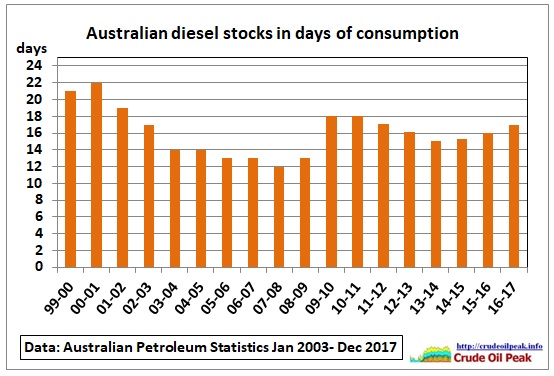 Fig 4: Food shortages in 2 weeks
Fig 4: Food shortages in 2 weeks
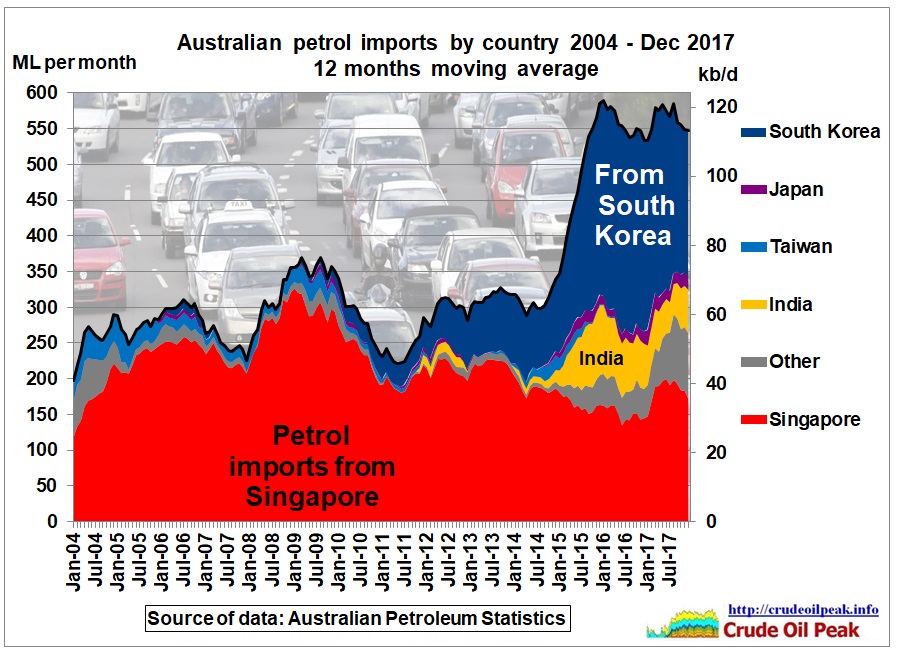
Fig 5: Hope for the best in South Korea
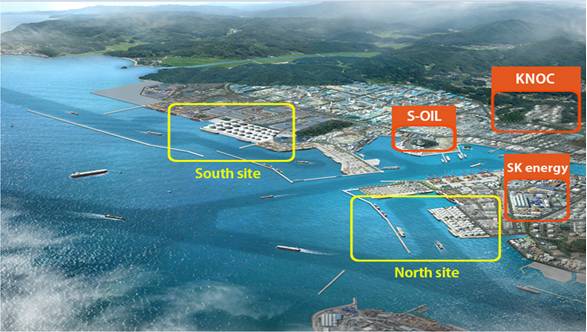
Fig 6: Check where your petrol comes from: Ulsan

Fig 7: Walk and cycle in 3 weeks
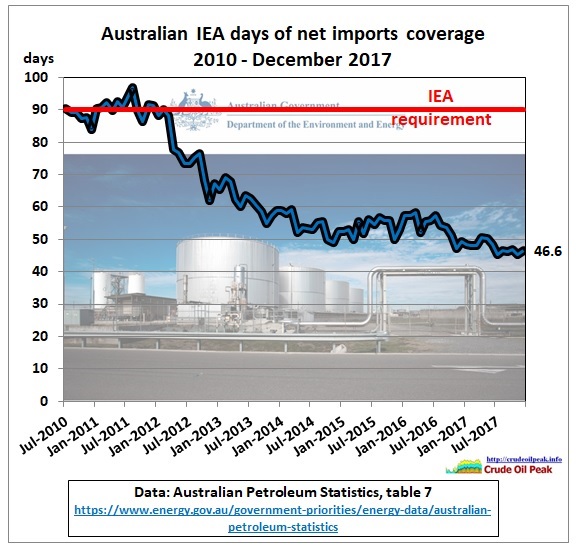
Fig 8: IEA days of net imports coverage vs IEA requirement
Note: IEA days of net imports coverage is calculated based on the IEA total emergency reserves and net imports methodology of the IEA International Energy Program (IEP). The net imports calculation is rebased in the reporting month of April of each year.
https://www.energy.gov.au/government-priorities/energy-data/australian-petroleum-statistics
Table 6 in the APS contains Australia’s actual stock numbers, by fuel type:
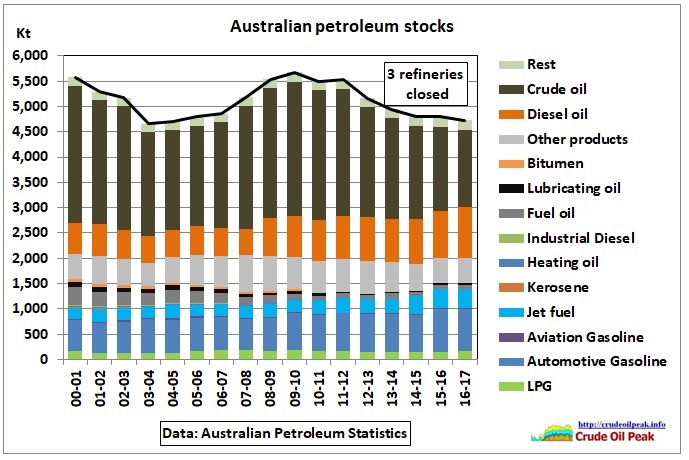 Fig 9: Australian petroleum stocks (4.7 mt in 2016/17)
Fig 9: Australian petroleum stocks (4.7 mt in 2016/17)
The coverage from Fig 8 is around half of the IEA requirement so the magnitude of the job is practically the doubling of current stock holdings. Declining crude oil production and increasing demand would make this job even bigger.
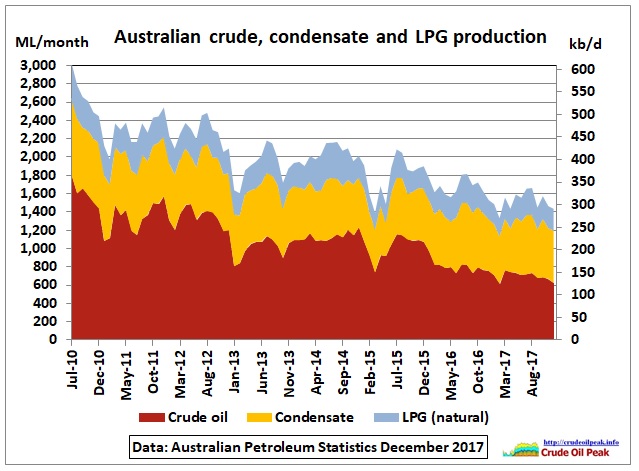 Fig 10: Australian crude, condensate and LPG production
Fig 10: Australian crude, condensate and LPG production
This is what the latest IEA report
“Australia’s Position in Global Energy
IEA In-Depth Review 2018”
highlights on this topic:
Compliance with the IEA stockholding obligation
All IEA countries have two obligations:
i) to hold emergency stocks equivalent to 90-days of net imports; and
ii) to have effective policies in place in order to be able to contribute to an IEA collective action.
Australia meets neither obligation. In 11 out of the 12 months of 2012, and for all of 2013 to 2017, end-month stock levels were below the 90-day level. Stock levels as of 1 October 2017 were equivalent to only 48 days of net imports. This was Australia’s lowest reported monthly stock level in terms of days’ cover since 2000, the year in which its domestic production peaked. The stock decline is confined to crude oil stocks and has arisen from the decline in domestic oil production and the closure of three of Australia’s seven refineries between 2012 and 2015.
Days’ cover of refined petroleum products has remained stable in recent years. In addition to not meeting its international obligations, this situation leaves Australia more vulnerable in the event of a significant external supply shock. Although the long supply chain provides Australia with additional time to implement domestic measures in response to a supply shock, low stock levels limit the country’s options for addressing such a disruption.
 Fig 11: Dr. Birol briefing CEOs of Australia’s major energy businesses, industry groups and market bodies.
Fig 11: Dr. Birol briefing CEOs of Australia’s major energy businesses, industry groups and market bodies.
A long supply chain also presents challenges in responding to unexpected fluctuations in domestic demand – challenges, which may be exacerbated by the relatively low stock levels. The government is now committed to addressing this situation and in June 2016 presented a plan to return to compliance by 2026. To date, Australia has made good progress with the plan’s implementation although it has further work to do.
The government plan to return to compliance with its oil stockholding obligation under the Agreement on an International Energy Program in June 2016 (DOEE, 2016) includes two phases.
During 2016-20, Australia will establish an initial ticketing commitment of 400 kilotonnes (kt) to ensure that the country can contribute to an IEA collective action while it implements longer-term measures for full compliance. As part of phase 1, Australia aims to start purchasing tickets in July 2018, establish mandatory petroleum and other fuel data-reporting requirements and establish a new Energy Security Office (ESO) in the government (the ESO was established from 1 July 2016 and is responsible for Australia’s return to compliance). In its 2016/17 budget, the government allocated AUD 23.8 million over four years to support this first phase of work.
In the second phase during 2020-26, Australia aims to build the necessary stocks (seeking a combination of physical stocks and tickets) to return to full compliance. It also committed to developing an implementation plan for the second phase of the stockholding arrangements by 2020. No decisions on budget allocations for the second phase had been announced at the time of writing the report.
Recommendations
The government of Australia should:
• In conjunction with its plan to return to compliance with the 90-day IEA stockholding obligation, use part of this obligation to increase the level of buffer stocks in the domestic oil supply chain to reduce the potential economic and social impact of a major supply disruption.
• Implement improvements to fuel quality standards, including a 10-ppm standard for sulphur levels in gasoline, and restrictions on the use of octane-enhancing fuel additives, in line with modern environmental best practice.
http://www.iea.org/publications/freepublications/publication/EnergyPoliciesofIEACountriesAustralia2018Review.pdf
What’s the government doing?
In negotiations with the IEA, the Australian government agreed in June 2016 to following measures:
- the introduction of mandatory reporting of Australian Petroleum Statistics from January 2018
- the purchase of 400 kilo tonnes of oil tickets in 2018-19 and 2019-20 to enable Australia to contribute to an IEA collective action if needed. Tickets are used by some IEA members to supplement in-country stocks to meet their 90 day requirement and can be used to contribute towards collective action in the event of an oil supply disruption
- a return to full compliance with the IEA stockholding obligation by 2026. This will include diplomatic engagement to expand the international ticket market in the Asia-Pacific region, and ongoing investigation into the potential for emergency liquid fuels stockholdings to be established in Australia and overseas
- establishment of an Energy Security Office [in July 2016] within the Department of the Environment and Energy
https://www.energy.gov.au/iea-international-energy-program-treaty
Related posts:
12/8/2017 Almost half of Australia’s petrol, diesel and jet fuel imports come from South Korea and Japan
http://crudeoilpeak.info/almost-half-of-australias-petrol-diesel-and-jet-fuel-imports-come-from-south-korea-and-japan
23/6/2017 Australia’s oil stock coverage on record low
http://crudeoilpeak.info/australias-oil-stock-coverage-on-record-low
29/4/2017
South Korea’s oil trade under threat
http://crudeoilpeak.info/south-koreas-oil-trade-under-threat
14/4/2017
Australia more vulnerable than ever to fuel import disruptions
http://crudeoilpeak.info/australia-more-vulnerable-than-ever-to-fuel-import-disruptions
12/1/2016 No glut in Australian petroleum inventories
http://crudeoilpeak.info/no-glut-in-australian-petroleum-inventories